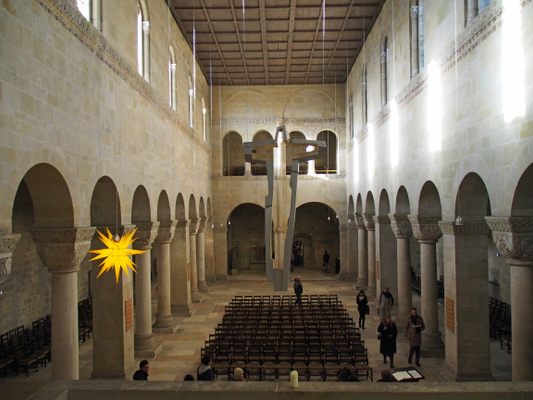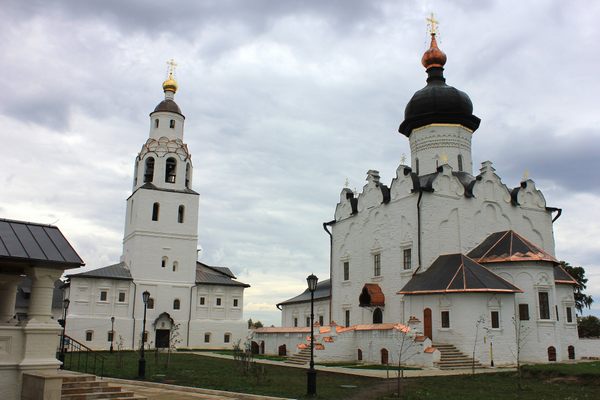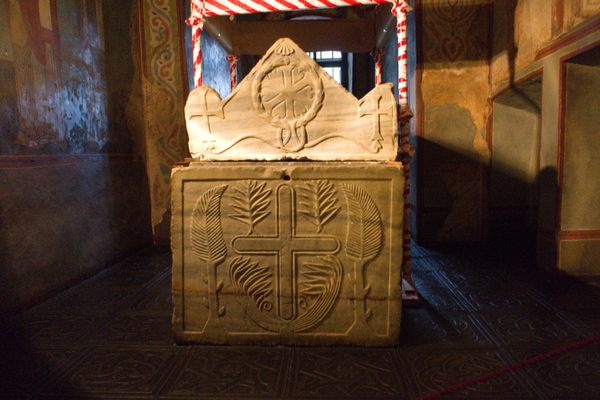About
In the early 1990s, several missing medieval European treasures appeared on the market and began to be traced back to Texas and then to Lieutenant Joe Tom Meador, a soldier who served in Germany during World War II.
In what was referred to as one the greatest art thefts of the 20th century, Lt. Meador secreted away precious artworks and manuscripts worth millions from a cave he was supposed to be guarding during the last days of the war. This treasure-filled cave was situated in the Harz mountains and the pieces belonged to the cathedral in the nearby town of Quedlinburg. Collectively called the Quedlinburg treasures, the collection included the bejeweled Samuhel Gospels, a 9th-century manuscript, a casket, a biblical manuscript decorated with gold and silver, and a liturgical ivory comb.
These were collected by the abbey in Quedlinburg, whose powerful abbesses played an important role in Quedlinburg’s history of over 1,000 years. In the early 10th century, the abbey was founded in 936 by Queen Matilda of the Holy Roman Empire, who was later canonized and became Saint Matilda. It housed unmarried women and widows from noble families and helped in their education and religious development. With its connections, it quickly received generous endowments and became a powerful influence in the region, as well as more widely. The only religious leader senior to the abbess was the pope himself.
For several centuries it was a center of scholarship and learning. An important text titled the “Annals of Quedlinburg” was produced in the abbey in the 11th century, and largely focused on the history of the Roman Empire, thought to be a rare medieval work written by a woman. The town itself, which received UNESCO World Heritage status in 1994, is known for its remarkably authentic half-timbered houses which sustained very little damage over the centuries, and quaint cobblestone alleys.
The abbey church, dedicated to St Servatius, was constructed in the 12th century, and is one of the best-preserved structures of its time. Today it once again contains the Quedlinburg treasure, which was recovered by the church in the mid-'90s, and now on display.
Related Tags
Know Before You Go
It's a 2.5 to 3 hour train ride from Berlin. It is easy to take the ICE or other regional trains to get there. There is also the option of taking a bus (ex. Flixbus).
Published
September 11, 2017
Sources
- http://www.uncommon-travel-germany.com/quedlinburg.html
- http://www.lonelyplanet.com/germany/quedlinburg/introduction
- https://www.spottinghistory.com/view/5005/quedlinburg-abbey/
- http://www.dw.com/en/quedlinburg-unesco-heritage-site-with-medieval-half-timbered-buildings/av-16030530
- http://openbuildings.com/buildings/quedlinburg-abbey-profile-24543?_show_description=1
- http://www.quedlinburg.de/en/culture__tourism/article-118057004247.html
- http://www.ancient-origins.net/artifacts-ancient-writings/annals-quedlinburg-rare-example-female-scholarship-medieval-europe-004488
- https://www.historyofroyalwomen.com/theophano/theophano-holy-roman-empress/
- http://www.quedlinburg.de/en/history.html
- http://www.nytimes.com/1994/09/03/arts/letters-show-thief-knew-value-of-the-quedlinburg-treasures.html?mcubz=0
- http://www.nytimes.com/1990/06/14/arts/a-trove-of-medieval-art-turns-up-in-texas.html?pagewanted=all&mcubz=0
- https://www.monumentsmenfoundation.org/join-the-hunt/significant-restitutions/1992-quedlinburg-treasure-usa

































